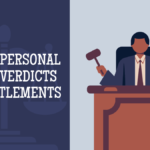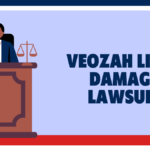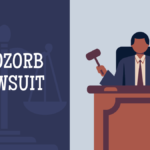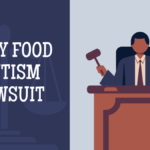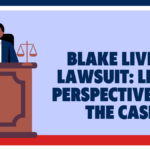Kansas Personal Injury Verdicts and Settlements form the backbone of compensation recovery for individuals who have experienced harm through the negligent actions of others within the state. For victims navigating the aftermath of accidents, understanding these legal outcomes becomes paramount to securing appropriate financial recovery and ensuring justice is served.
Did You Know? The average personal injury settlement in Kansas varies dramatically based on injury severity, with awards ranging from $10,000 for minor soft tissue injuries to over $1.7 million for catastrophic cases involving permanent disability.
When injuries occur due to someone else’s carelessness or misconduct, the financial burden can be overwhelming. Medical expenses accumulate rapidly, income disappears during recovery periods, and the physical and emotional toll can be devastating. Kansas Personal Injury Verdicts and Settlements provide a legal avenue for victims to reclaim their financial stability while ensuring those responsible are held accountable for their actions.
The Foundation of Kansas Personal Injury Law
Kansas operates within a traditional fault-based legal system where the party responsible for causing harm bears the financial responsibility for resulting damages. This approach differs from no-fault states and creates a clear framework for determining liability and compensation in injury cases.
Types of Damages Available in Kansas
Economic Damages:
- Medical expenses (past and future)
- Lost wages and earning capacity
- Property damage costs
- Rehabilitation and therapy expenses
- Home modification costs for disabilities
Non-Economic Damages:
- Physical pain and suffering
- Emotional distress and trauma
- Loss of enjoyment of life
- Disfigurement and scarring
- Loss of consortium (for spouses)
Important Limitation: Kansas caps non-economic damages at $350,000 for medical malpractice cases – one of the lowest limits in the United States.
Kansas Comparative Fault System
| Plaintiff’s Fault Percentage | Recovery Status | Example Recovery |
|---|---|---|
| 0% – 49% | Full Recovery (reduced by fault %) | 30% fault = 70% of damages |
| 50% or more | No Recovery | $0 regardless of damages |
The state employs a modified comparative fault system that can dramatically affect case outcomes. Injured parties can only recover damages if their contribution to the incident remains below 50%. Once a plaintiff’s fault reaches or exceeds this threshold, they become ineligible for any compensation whatsoever.
Current Trends in Kansas Personal Injury Awards
Recent Kansas Personal Injury Verdicts and Settlements reveal significant variation in compensation amounts, reflecting the diverse nature of injury cases throughout the state. Here’s a breakdown of notable recent cases:
High-Value Cases (2023-2024)
MOTORCYCLE vs. CITY INFRASTRUCTURE
Award: $1,700,000
Details: Permanent disability from striking inadequately marked bollard
DRUNK DRIVING REAR-END COLLISION
Settlement: $600,000
Details: Healthcare worker with surgical repairs and PTSD
TEEN TRUCK ACCIDENT
Settlement: $300,000
Details: Multiple fractures and head trauma
Moderate-Value Cases
- $146,416 – Rear-end collision with neck/back injuries
- $126,306 – Rear-end crash with severe injuries
- $119,211 – Collision causing concussion and spinal trauma
- $87,463 – Parking lot accident with shoulder injury
Lower-Value Cases
- $50,054 – Lane change collision (disputed causation)
- $45,500 – Left turn accident with multiple minor injuries
- $10,064 – T-bone collision with neck/back/hip injuries
Key Factors Influencing Kansas Personal Injury Verdicts and Settlements
Primary Considerations
- Severity of Injuries
- Permanent vs. temporary disabilities
- Need for ongoing medical care
- Impact on daily activities and work capacity
- Clarity of Liability
- Clear fault vs. disputed responsibility
- Multiple party involvement
- Institutional negligence (cities, hospitals, corporations)
- Economic Impact
- Medical expenses incurred and projected
- Lost income and future earning capacity
- Cost of accommodations and care
- Defendant’s Conduct
- Ordinary negligence vs. reckless behavior
- Intoxication or criminal activity
- Repeat offenses or institutional failures
Broader Implications for Stakeholders
Kansas Personal Injury Verdicts and Settlements create ripple effects throughout various sectors of society, influencing decision-making processes for individuals, businesses, and institutions across the state.
Impact on Different Groups
| Stakeholder | Primary Impact | Considerations |
|---|---|---|
| Injury Victims | Financial recovery pathway | Must act within 2-year statute of limitations |
| Insurance Companies | Settlement benchmarks | Use verdicts to calibrate reserve amounts |
| Healthcare Providers | Liability exposure | $350,000 cap may affect practice decisions |
| Businesses | Risk management | Higher-risk industries adjust practices |
| Municipalities | Infrastructure liability | Recent cases emphasize proper maintenance |
Industry-Specific Considerations
Transportation Sector:
- Commercial vehicle operators face higher scrutiny
- Alcohol-related incidents result in significantly higher awards
- Inadequate maintenance documentation increases liability
Healthcare Industry:
- Damage caps limit exposure but don’t eliminate risk
- Documentation and communication failures often drive cases
- Rural provider availability may be affected by litigation costs
Construction and Manufacturing:
- Workplace safety protocols directly impact liability
- Equipment maintenance records crucial for defense
- Training documentation essential for reducing claims
Essential Legal Deadlines and Procedures
Critical Time Limits
Standard Personal Injury Cases:
- Statute of Limitations: 2 years from injury or discovery
- Statute of Repose: 10 years maximum from incident date
Medical Malpractice:
- Statute of Limitations: 2 years from discovery
- Statute of Repose: 4 years maximum from incident date
Childhood Sexual Abuse (New 2023 Law):
- Extended Deadline: Until age 31 or 3 years after criminal conviction
- No Limitations Window: Past deadline cases cannot be revived
Government Claims:
- Special Notice Required: Written notice before lawsuit filing
- Shorter Deadlines: Varies by entity and claim type
- Procedural Complications: Additional requirements and potential immunity
Emerging Legal Developments
Recent legislative modifications have expanded victim rights in specific circumstances, particularly regarding historical sexual abuse cases. The 2023 statutory changes represent a significant shift in how Kansas approaches these sensitive matters.
Technology’s Growing Role
Case Investigation:
- Accident reconstruction software
- Drone photography for scene documentation
- Electronic data recovery from vehicles
Medical Evidence:
- Advanced imaging techniques
- Biomechanical analysis
- Telemedicine documentation
Trial Presentation:
- Virtual reality accident recreation
- 3D medical illustrations
- Interactive damage calculators
Moving Forward: Essential Guidance for Injury Victims
Kansas Personal Injury Verdicts and Settlements demonstrate the complex interplay of legal, medical, and financial factors that determine compensation in injury cases.
Action Checklist for Injury Victims
Immediate Steps:
- Seek medical attention promptly
- Document the accident scene with photos
- Obtain contact information from witnesses
- Report the incident to appropriate authorities
- Notify your insurance company
Ongoing Documentation:
- Keep all medical records and bills
- Maintain a pain and recovery diary
- Document lost wages with employer statements
- Photograph visible injuries throughout healing
- Save receipts for all related expenses
Legal Considerations:
- Consult with a qualified attorney within weeks, not months
- Avoid signing documents without legal review
- Don’t provide recorded statements to opposing insurance
- Understand your policy coverage limits
- Research attorney credentials and experience
Professional Tips for Success
Attorney Selection Criteria:
- Experience with similar case types in Kansas
- Trial experience and verdict history
- Contingency fee arrangements available
- Clear communication about case timeline and expectations
Common Mistakes to Avoid:
- Delaying medical treatment (creates gaps in causation)
- Accepting quick settlement offers without full injury assessment
- Posting about accidents or injuries on social media
- Failing to follow prescribed medical treatment
- Missing statute of limitations deadlines
Understanding Settlement vs. Trial
| Settlement | Trial |
|---|---|
| Guaranteed outcome | Uncertain result |
| Faster resolution | Lengthy process |
| Lower costs | Higher expenses |
| Privacy maintained | Public record |
| Potentially lower amount | Potentially higher award |
Conclusion: Your Path to Fair Compensation
Kansas Personal Injury Verdicts and Settlements represent more than statistical data points—they embody real people’s journeys toward justice and financial recovery after life-altering events. Understanding this legal landscape empowers victims to make informed decisions about their cases and maximize their chances of fair compensation.
Key Takeaways
Remember These Critical Points:
- Kansas follows a harsh 50% rule for comparative fault
- Medical malpractice damages are strictly capped
- Two-year statute of limitations applies to most cases
- Government claims require special procedures
- Insurance coverage gaps can significantly impact recovery
The path forward requires prompt action, careful documentation, and professional guidance. While the legal process may seem overwhelming, thousands of Kansas residents have successfully navigated these waters to secure the compensation they deserved for their injuries and suffering.
This information is provided for educational purposes only and does not constitute legal advice. Consult with a qualified Kansas personal injury attorney to discuss your specific situation and understand your rights under current state law.
Also Read:

